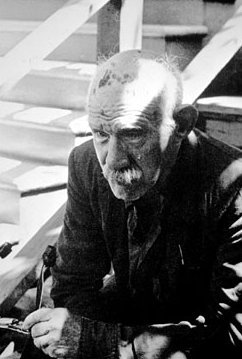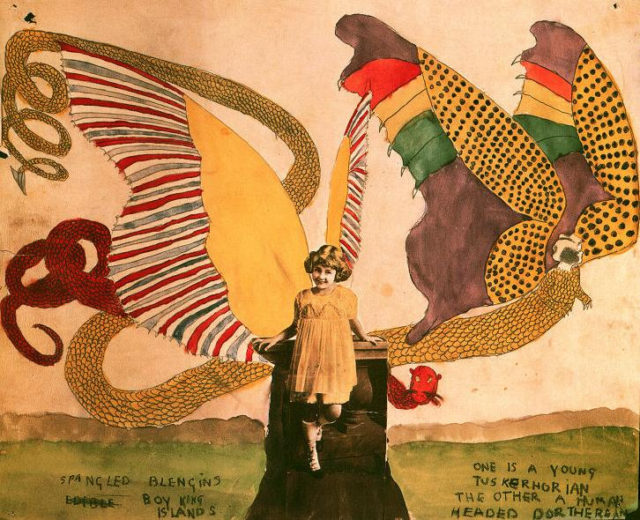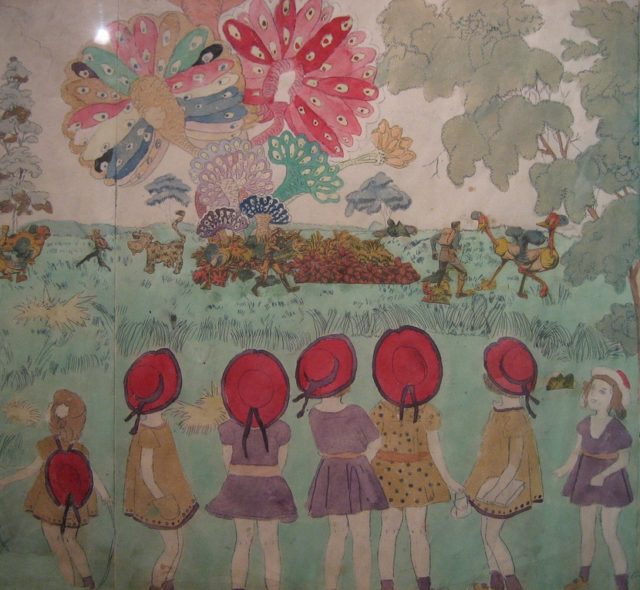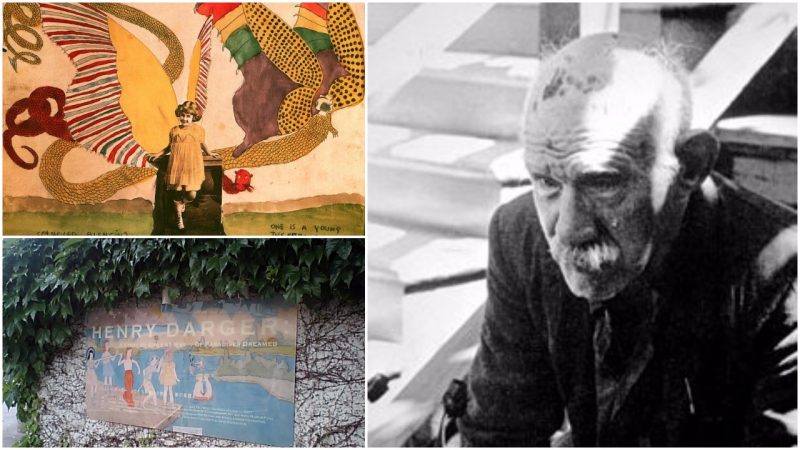Throughout history, the talent of certain influential and visionary artists has been recognized only after their death. Sometimes it’s a result of society not being ready to acknowledge the work of artists who are way ahead of their time, and sometimes it happens because artists decided not to share their work with the public.
For example, most of the works of Franz Kafka became famous only after his friend Max Brod refused to burn his writings after Kafka’s death and instead choose to edit and publish them. Vincent Van Gogh died in 1890 having sold only a single painting in his lifetime–his style and technique achieved international acclaim more than 20 years after his death.
Then there’s Henry Darger, an artist whose entire oeuvre was discovered posthumously. Darger was a reclusive loner who worked as a janitor at a Christian hospital in Chicago from 1908 until his retirement in 1963.
Over the years he lived in several small apartments on Chicago’s North Side, and from 1930 until his death in 1973 he resided in a room on the second floor near Lincoln Park. His landlord happened to be Nathan Lerner, an accomplished Chicago photographer. When Darger died, Lerner ventured into his room to clear the space for future tenants and was surprised to discover things he didn’t expect to find in the old loner’s room.

The room contained a collection of weird items that Darger had gathered over the years: balls of string, newspaper clippings, religious figurines, a pile of empty bottles of medicine, and maple syrup. However, the real discovery was hidden in a large trunk in the corner of the room: several manuscripts, each thousands of pages long. The longest typed manuscript, titled The Story of the Vivian Girls, in What is Known as the Realms of the Unreal, of the Glandeco-Angelinian War Storm, Caused by the Child Slave Rebellion, was a 15,145-page-long fantasy epic that contained over 300 detailed illustrations. The story presented in the manuscript follows the seven princesses of a fictional Christian land of Abbieannia as they take part in a rebellion against child labor imposed by vicious overlords named Glandelinians.
Another typed manuscript, Crazy House: Further Adventures in Chicago, was almost 10,000 pages long and functioned as a sequel to the fantasy epic. A handwritten manuscript of nearly 5,000 pages was also found. It was titled History of My Life and contained a fictionalized depiction of Darger’s early childhood and psychological struggles.

Lerner and his wife, Kiyoko, recognized the artistic value of Darger’s writings and drawings and decided to look for ways through which his work could be presented to the public. Their efforts succeeded: his writings have been published by several major publishing houses and his drawings have been included in the permanent collections of numerous high profile museums such as the Art Institute of Chicago, Smithsonian American Art Museum, the Museum of Modern Art, and the American Folk Art Museum in New York. Darger is now regarded as one of the most influential outsider artists in American history.
Darger’s elaborate writings and drawings feature a prominent and somewhat creepy recurring theme: efforts to stop and punish all kinds of mistreatment of children. All of his works are filled with child characters who try to stop various molesters from ruining their childhood and enslaving them. Darger himself often appears as a character in his writings, he is the one who comes to help the children when they are in trouble and defends them from many ill-intent characters.

Due to the graphic violence and the somber tone of Darger’s work, a few critics suspected that Darger was, in fact, mentally ill and dangerously obsessed with children. However, most researchers opposed this claim after discovering details from Darger’s life. His urge to protect children from all harm most likely stemmed from the pain and suffering he endured in his own childhood.
Darger’s mother died when he was four years old and his sick father had to be placed in a home for the disabled when he was eight, so he ended up in a Catholic orphanage. However, the caretakers at the orphanage pronounced him mentally ill and institutionalized him in the horrendously named Illinois Asylum for Feeble-Minded Children. While in the asylum, Darger endured years of abuse and mistreatment from both his peers and the asylum staff. He managed to escape in 1908 when he was 16 years old and got the job of hospital janitor, which he held until his retirement.

Although Darger escaped from the horrors of the asylum, years of mistreatment inflicted a permanent psychological trauma. His writings and drawings were most likely his way of coming to terms with his own fears, traumas, and horrible memories.
Related story from us: The dangers of being an artist in the former Soviet Union
His written works feature a distinct fluid style, many Biblical references, and characters from the history of Christianity combined with the incredibly detailed mythology he invented. Both the writings and the drawings inspired numerous contemporary artists and his work gained a cult following. With the curious case of Henry Darger in mind, one simply has to wonder how many such prolific artists were lost to history just because no one bothered to shuffle through their writings after they died.
